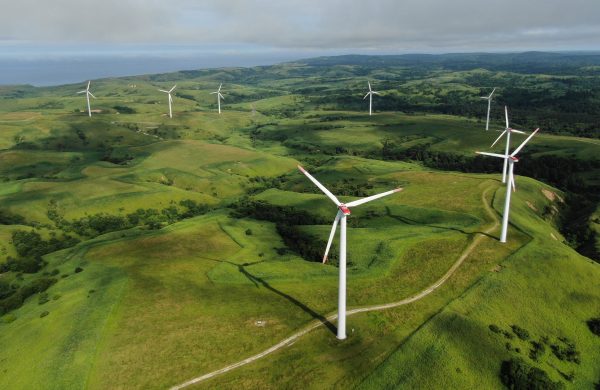By far the fastest energy transition in history is underway, with solar and wind offering cheap, unlimited energy with minimal resource, environmental and social constraints. Solar energy accounted for a larger share of new energy generation in 2022 than all other sources combined and is growing very rapidly. New wind generators were the second largest. Together, these renewable sources comprised three quarters of global electricity generation capacity additions. This is compelling, market-based evidence that solar and wind electricity generation is cheaper than fossil fuel and nuclear generation.
Japan could produce all of its electricity from wind and solar for US$86–110 per megawatt hour, which is competitive with current market prices. This includes the cost of transmission and storage needed to balance 100 per cent renewable electricity.
Most Japanese emissions could be eliminated well before 2050 through the generation of zero-emission electricity from solar and wind, coupled with the electrification of transport, heating and industry. To achieve this, Japan’s current electricity consumption will need to double.
Japan could generate about 50 times more electricity than its current consumption using offshore wind farms within its exclusive economic zone. This abundance means that Japan can be selective about where it locates offshore wind farms to maximise wind speeds, and minimise costs and environmental impacts.
Japan’s solar potential is also large. It has the potential to produce four times its current consumption from solar panels located on rooftops, floating on inland water bodies and deployed in conjunction with agriculture. Japan’s population of 125 million is forecast to decline by 18 per cent to 102 million by 2050, which could free up 18 per cent, or 8000 square kilometres of its current agricultural land. This land alone would be enough to provide all of Japan’s energy requirements from solar energy.
Large-scale electrical energy storage to support solar and wind is a solved problem in the form of batteries for short-term storage and pumped hydro energy storage for overnight and longer periods. The Australian National University’s global pumped hydro atlas shows 2400 sites in Japan with vast combined storage potential. Only a few dozen sites are required to support a 100 per cent renewable energy system.
Despite promising prospects, Japan is now lagging behind in terms of annual per capita deployment of new renewable energy. The Netherlands, Sweden, Australia and Finland are installing solar and wind five times faster, while China, Spain, Germany and the United States are installing solar and wind twice as fast as Japan.
The Japanese government’s Clean Energy Strategy Interim Report lacks clear recognition of the crucial role of solar and wind in global decarbonisation, and instead it promotes nuclear energy, imported hydrogen and carbon capture and storage (CCS). Market and technological developments strongly suggest that this is unlikely to be a good choice.
Total global nuclear capacity has been static since 2010 and CCS has not achieved any commercial success. Solar and wind already have a compelling economic advantage over nuclear generation and fossil fuel generation without CCS, as shown by their dominance in new power station deployment. Fossil-fuelled power stations equipped with CCS will be even less competitive because of large capital and energy costs of CCS.
Importation of clean hydrogen for energy production would be expensive because there are large and unavoidable energy losses associated with the compression, shipping, storage and conversion of hydrogen, which triples the effective energy cost. It will always be much cheaper for Japan to produce its own electricity from wind and solar than to import clean hydrogen.
About 10 million electric cars were sold in 2023, compared with 20,000 hydrogen powered vehicles. Japan’s export car industry is at risk due to a lack of focus on developing competitive models for the booming electric vehicle market.
Australia and northern European countries are showing that it is straightforward to largely decarbonise the electricity system by 2030 through the use of solar and wind. For example, Australia has set a target of 82 per cent renewable electricity by 2030.
With the right policies, Japan can look forward to a future in which it no longer imports oil, coal, gas or uranium, and instead is energy independent and resilient in the face of war and pandemics. Most buildings can be equipped to have their own solar panels, energy storage, electric vehicles, and electric space and water heating. This transition would eliminate greenhouse emissions, nuclear waste disposal, and other adverse effects from fossil fuel use. Japan can lock in cheap, clean and highly reliable perpetual energy.
The old certainties of fossil and nuclear energy are rapidly fading. The world is moving to solar and wind at a similar speed to digital photography’s displacement of film cameras. Hopefully Japan will keep up and not have its very own Kodak moment.
Andrew Blakers is Emeritus Professor of Engineering at The Australian National University and recipient of the 2023 Queen Elizabeth Prize for Engineering.

